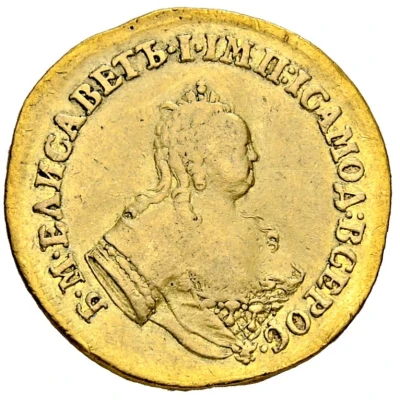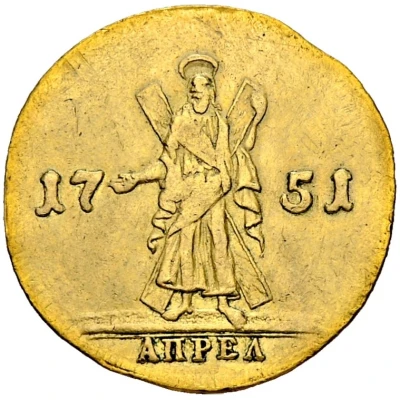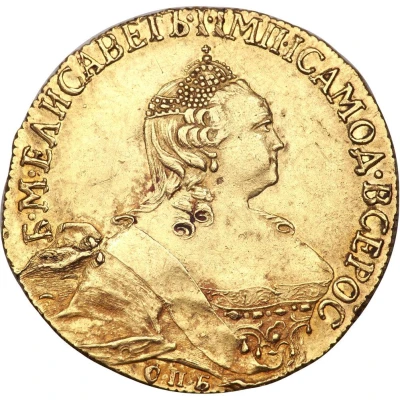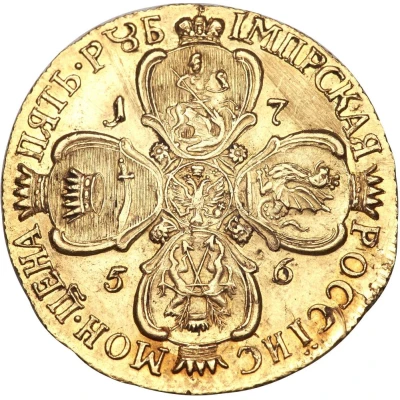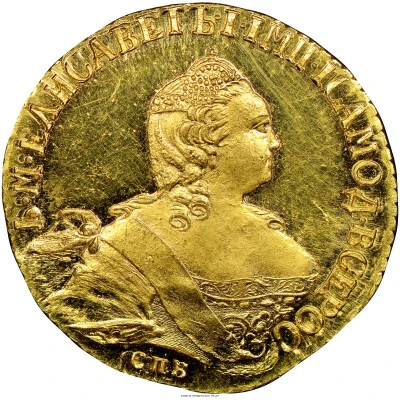
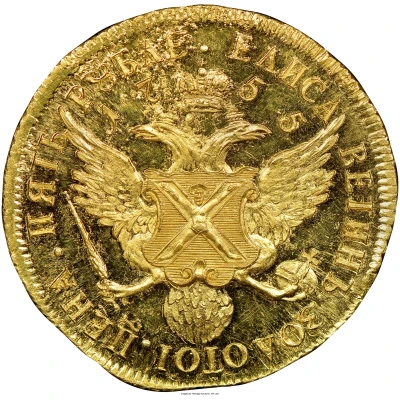

© Heritage Auctions
5 Roubles - Elizabeth Pattern; Novodel
1755 year| Gold | - | 25 mm |
| Issuer | Russian Empire |
|---|---|
| Empress | Elizabeth (1741-1762) |
| Type | Pattern |
| Year | 1755 |
| Value | 5 Roubles (5 Рублей) |
| Currency | Rouble (1700-1917) |
| Composition | Gold |
| Diameter | 25 mm |
| Shape | Round |
| Demonetized | Yes |
| Updated | 2024-10-07 |
| Numista | N#118520 |
|---|---|
| Rarity index | 97% |
Reverse
Crowned double-headed eagle with orb and scepter, and cross of St. Andrew, date above.
Script: Cyrillic
Lettering:
ЕЛИСАВЕТИНЪ ЗОЛОТОI . ЦЕНА . ПЯТЬ РƔБЛЕ.
17 55
Translation:
Elizabethan's gold, value of five rubles·
1755
Comment
Sev-186 (extremely rare), Petrov-200 Roubles.An astonishing example of this incredibly rare pattern issue. Known only as a Novodel, this type is missing from most major collections, and from most museums. The strike is superb, with evidence of being produced from rusted dies, as is often seen with Novodel issues. One of a series of 4 Novodel Proof Pattern 1755 gold 5 Roubles, with eagle reverse. Two pieces were struck with smaller planchet (ca. 23 mm), and two with larger planchets (ca. 25 mm). This is one of the two larger planchet patterns. One variety has a large cross on the eagle, and this type has a small cross. Both are excessively rare, with a small cross variety, and a large cross variety for each size planchet, and this piece, struck with a Half Imperial die, is the only example of the small cross type we can reference and the only piece certified by both NGC, and PCGS, combined.
From the D. Moore Collection
Interesting fact
The Pattern 5 Roubles - Elizabeth (Pattern; Novodel) 1755 from the Russian Empire made of Gold is a rare and highly sought-after coin among collectors. One interesting fact about this coin is that it was minted during the reign of Empress Elizabeth, who was known for her lavish spending and love of luxury items. As a result, the coin was likely produced in limited quantities and was not widely circulated, making it a valuable and unique piece of numismatic history.
